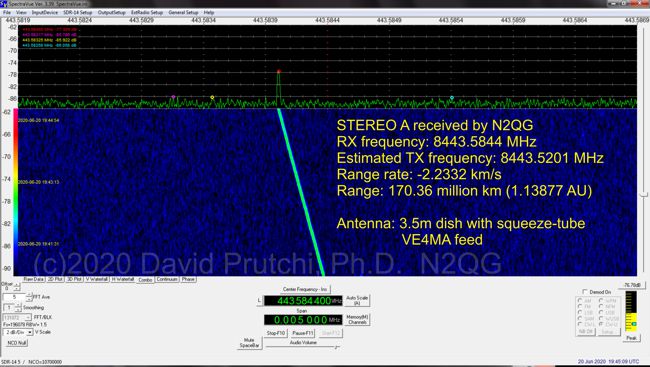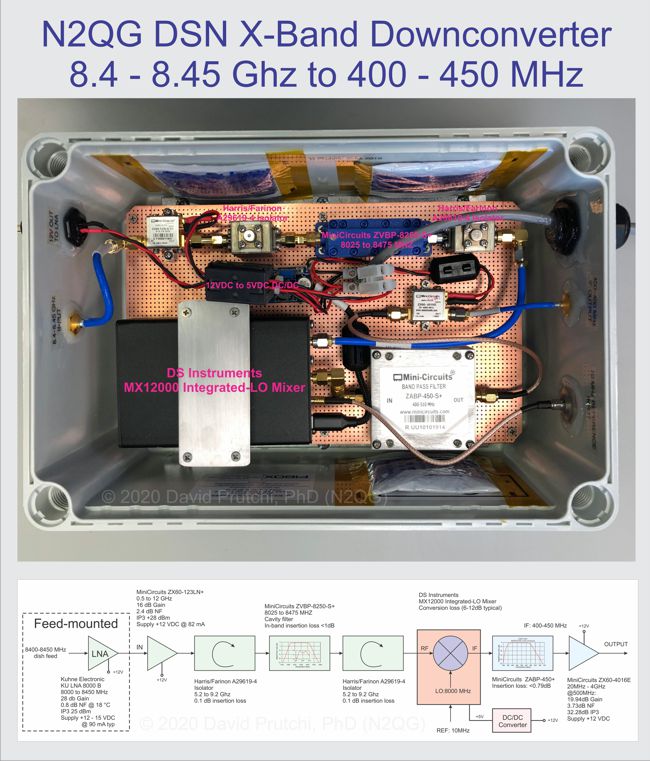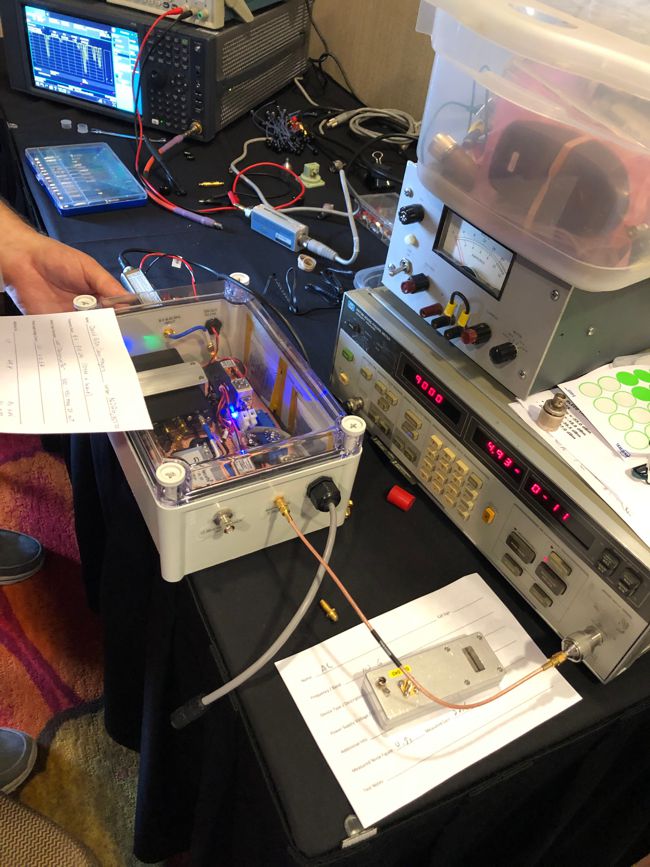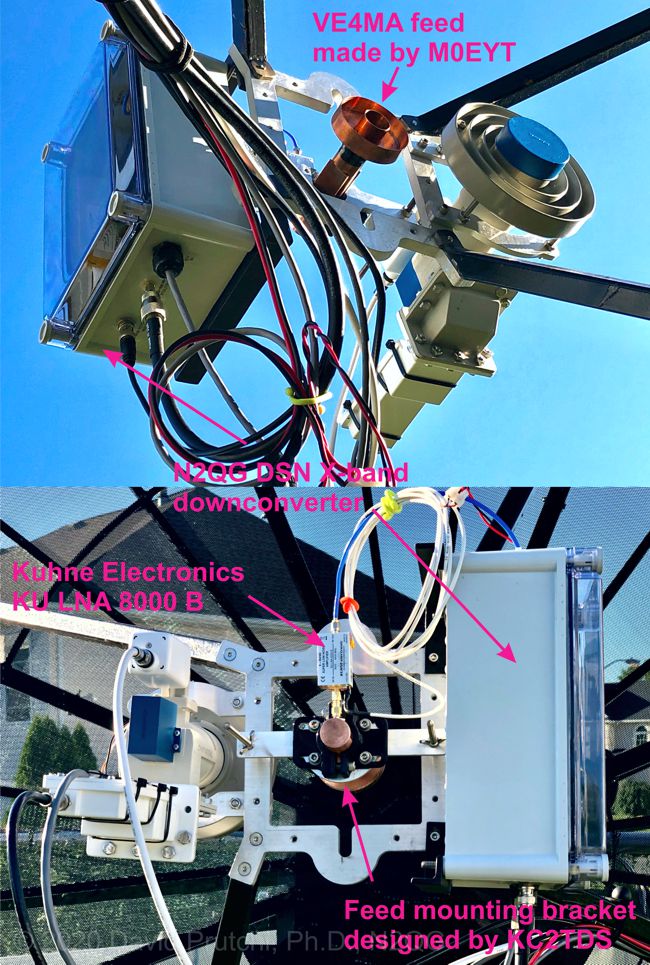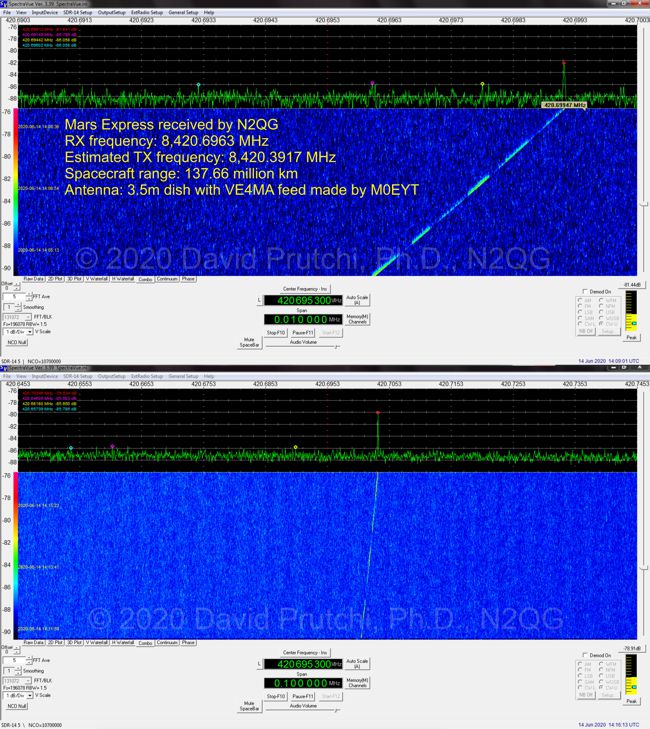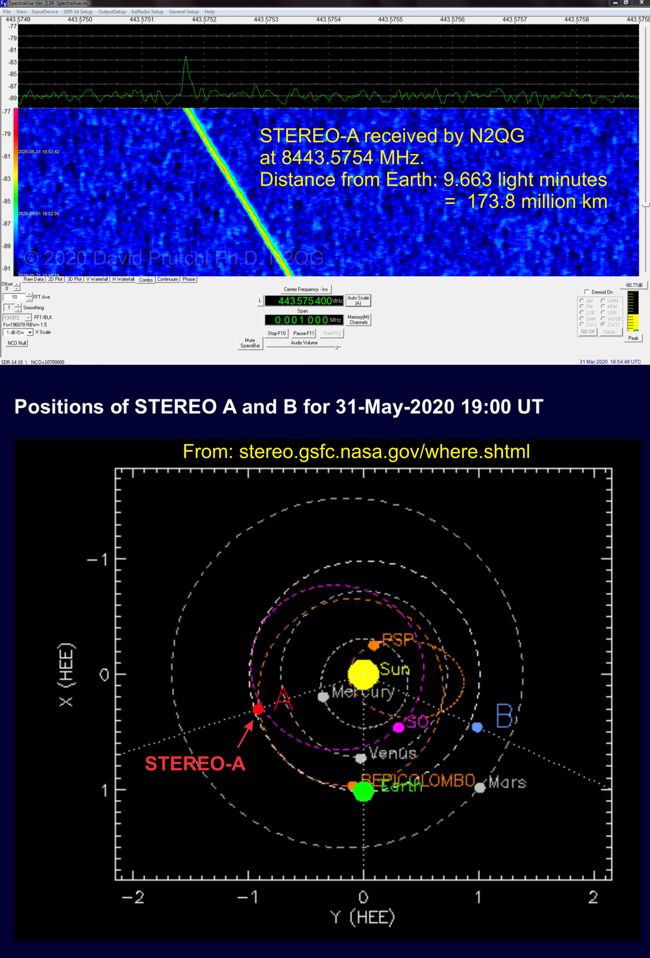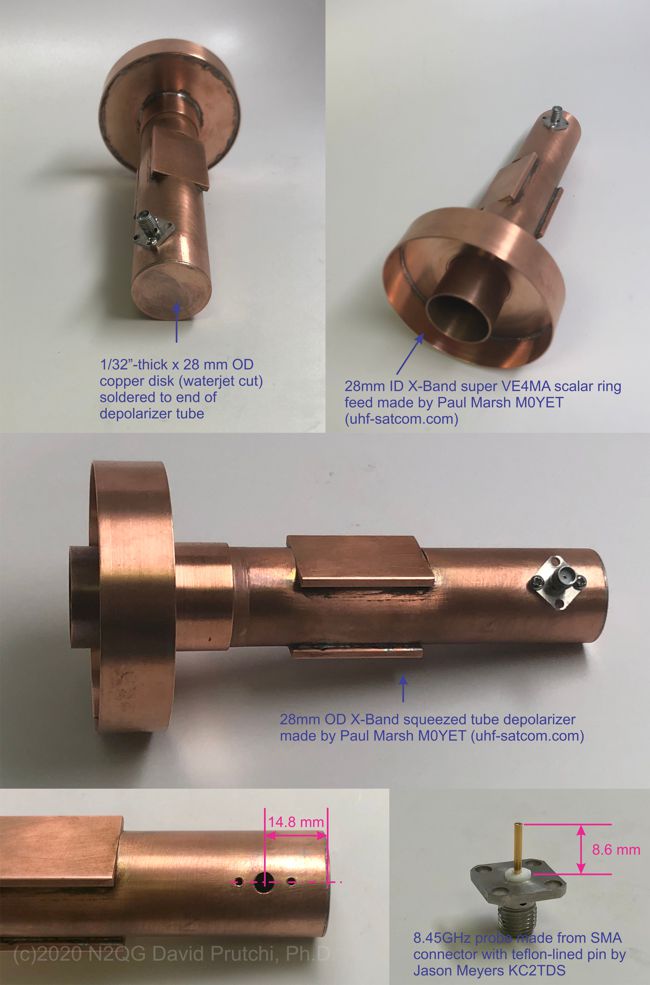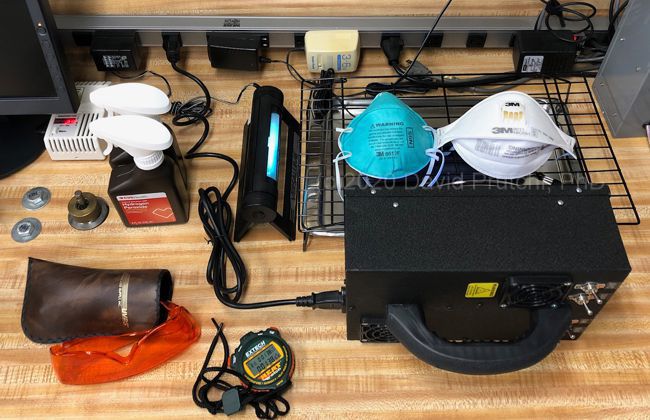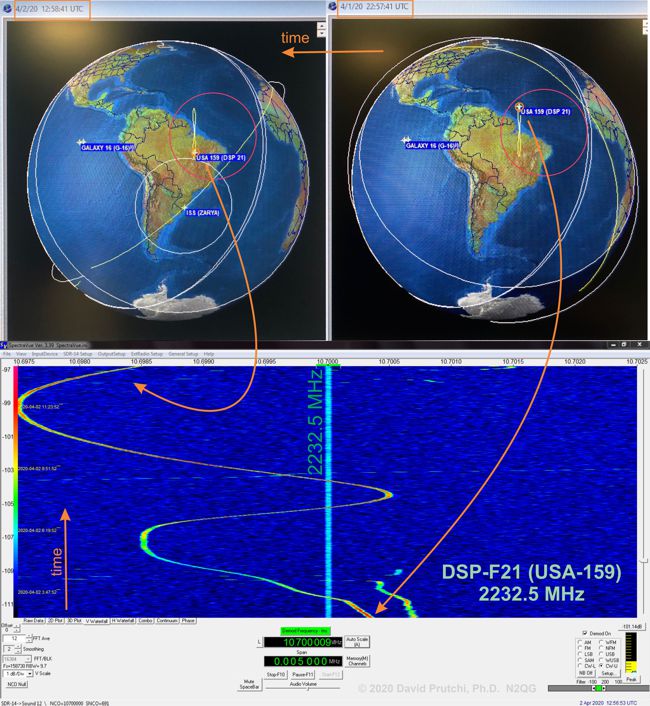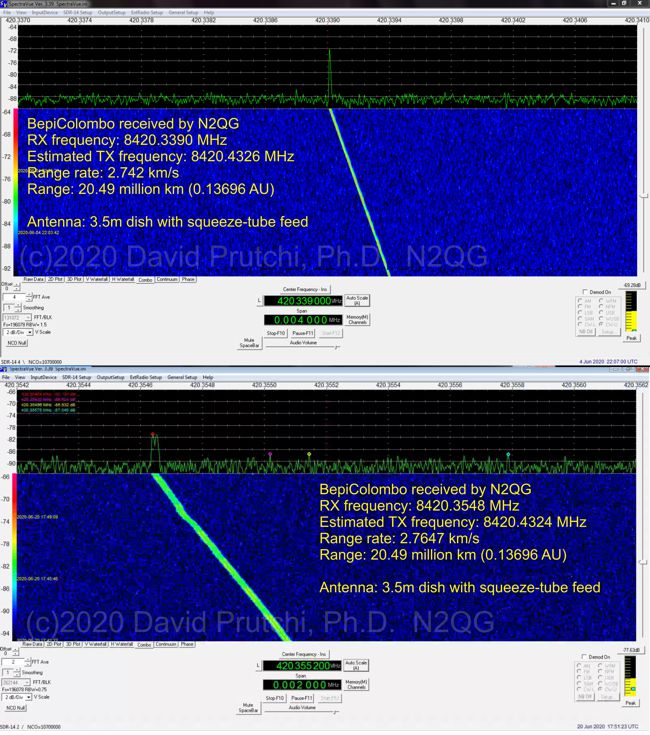
Today I tweaked the position of the feed and the VE4MA ring on the 3.5m dish. Signals improved quite a bit, with STEREO A at 9dB above noise, and BepiColombo at 15dB above noise. However, there is still quite a bit of room for improvement. I had to take down my measurement setup when the “severe thunderstorm” alert came in. Will try again tomorrow.
